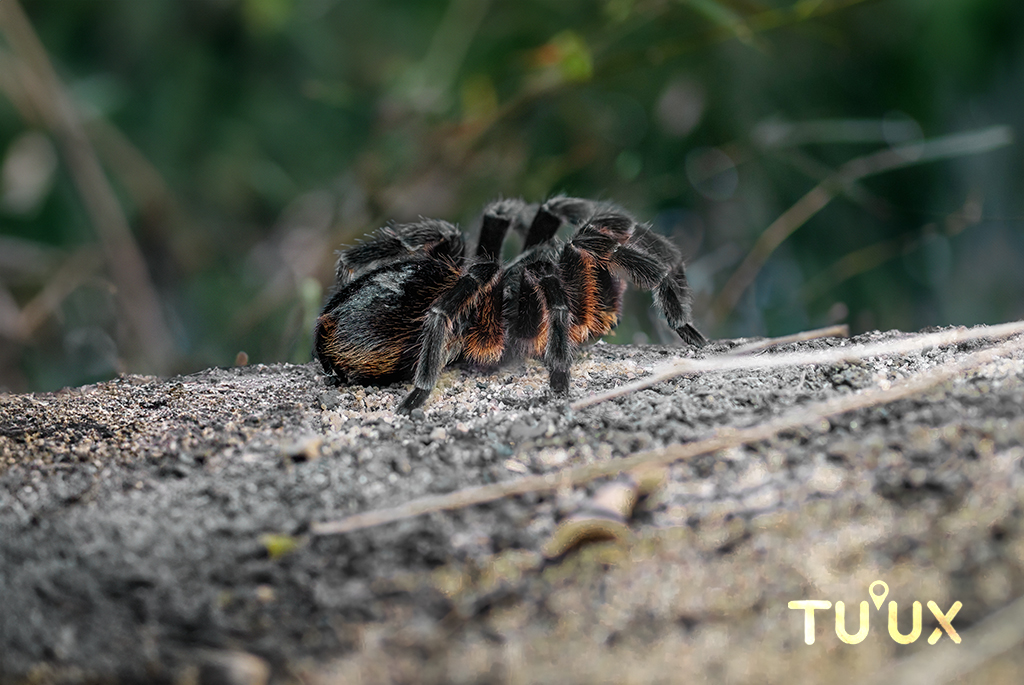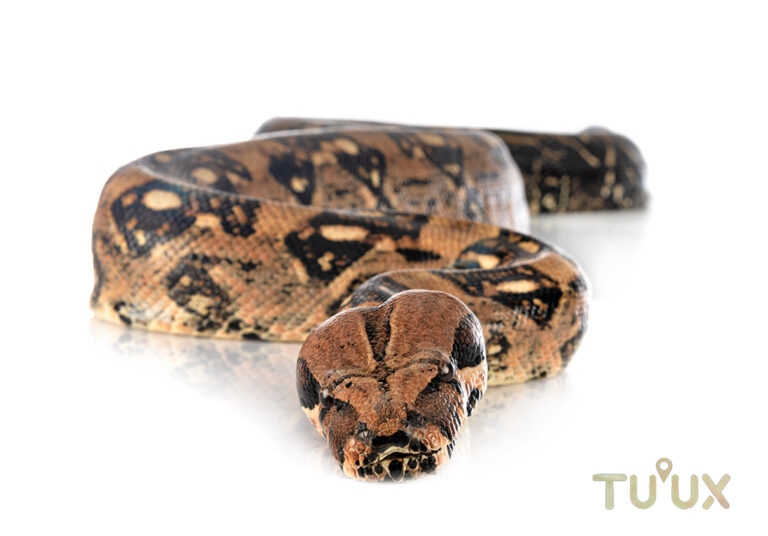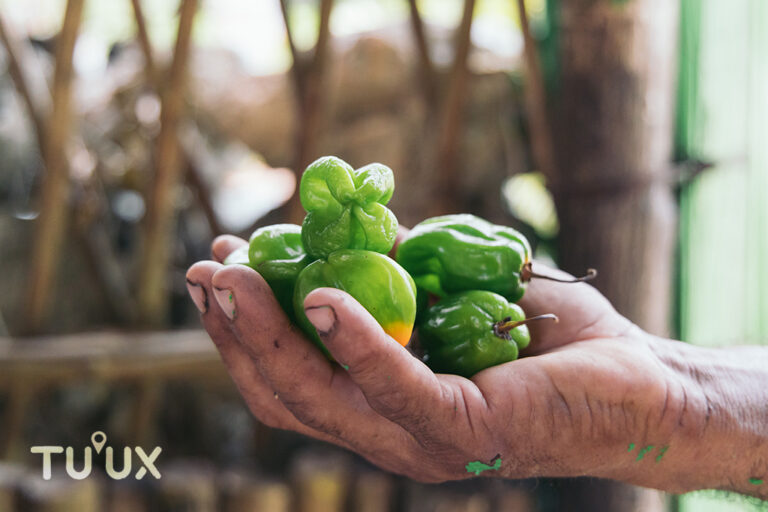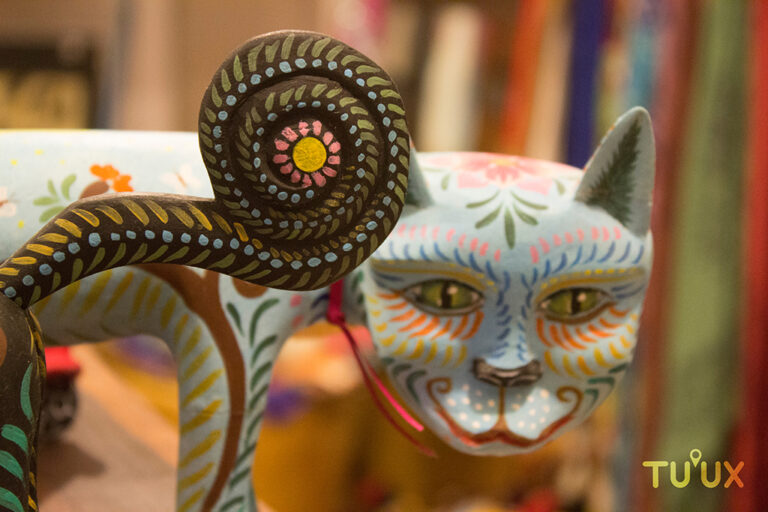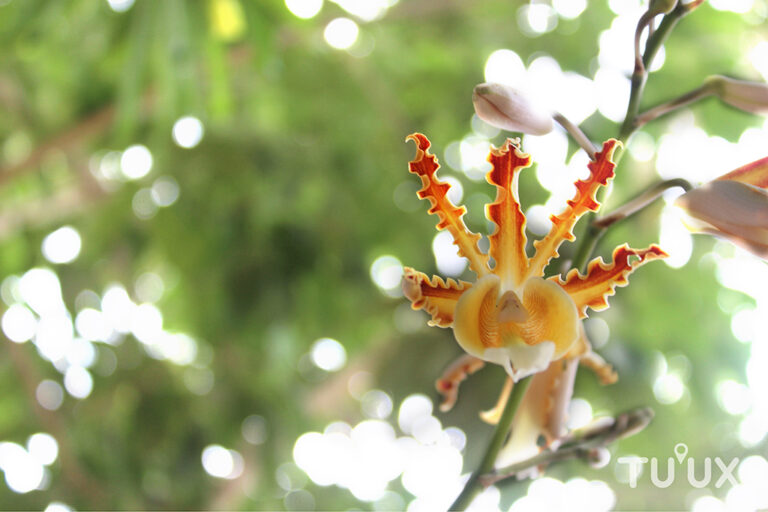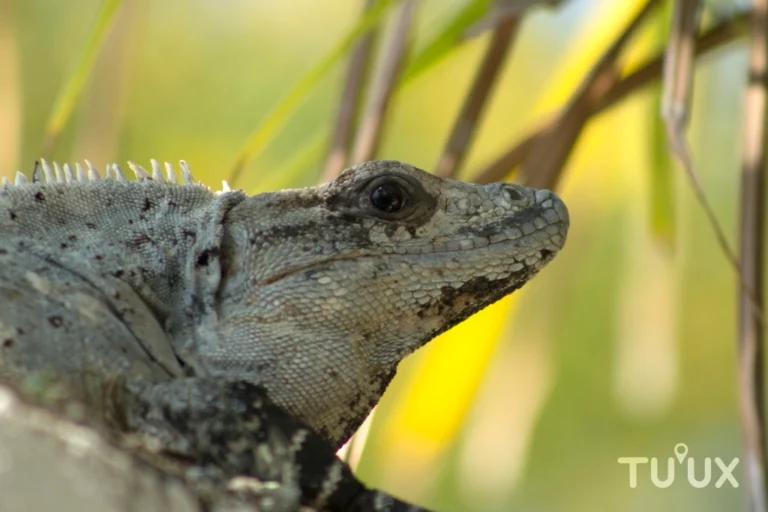TÁRÁNTULA
🕷️ Guardianas de los Ecosistemas
🌿 Introducción
El Caribe Mexicano, conocido por su exuberante biodiversidad y paisajes espectaculares, alberga una gran variedad de especies fascinantes. Entre ellas, las tárántulas destacan no solo por su apariencia imponente, sino por su papel esencial en el equilibrio ecológico. En regiones como Mahahual, Quintana Roo, estas arañas son verdaderas aliadas de la naturaleza, ayudando a controlar poblaciones de insectos y otros invertebrados, y contribuyendo así a la salud de los ecosistemas locales.
🕸️ Principales Especies de Tárántulas en Mahahual y el Caribe Mexicano
🐾 Tárántula Maya (Brachypelma epicureanum)
- Distribución: Endémica de la Península de Yucatán, especialmente en Mahahual.
- Apariencia: Marrón oscuro con tonos grisáceos; excelente camuflaje.
- Comportamiento: Nocturna y dócil; vive en madrigueras subterráneas.
- Estado de conservación: Protegida por la ley mexicana frente al comercio ilegal.
🔴 Tárántula Roja Mexicana (Brachypelma vagans)
- Distribución: Común en todo Quintana Roo.
- Apariencia: Abdomen con vello rojo intenso y cuerpo negro.
- Comportamiento: Excavadora; crea madrigueras profundas.
- Estado de conservación: Incluida en CITES por riesgo de tráfico.
🌑 Tárántula de Chiapas (Brachypelma kahlenbergi)
- Distribución: Originaria de Chiapas, con avistamientos en el sur de Quintana Roo.
- Apariencia: Más oscura, con menor presencia de vellos rojizos.
- Comportamiento: Solitaria y discreta; difícil de observar.
- Estado de conservación: Aún poco estudiada.
🏜️ Tárántula del Desierto (Aphonopelma anitahoffmannae)
- Distribución: Regiones áridas de la península, incluida Mahahual.
- Apariencia: Color marrón oscuro, cuerpo robusto.
- Comportamiento: Más activa durante la temporada de lluvias.
🧬 Características Físicas Adaptadas al Entorno
Las tárántulas del Caribe Mexicano están especialmente adaptadas a las condiciones del clima tropical y los suelos arenosos de la región:
- Tamaño corporal: De 5 a 9 cm, con patas que alcanzan hasta 15 cm de envergadura.
- Coloración: Marrones, negras y rojizas, ideales para el camuflaje.
- Pelaje: Cerdas urticantes utilizadas como defensa y para percibir vibraciones.
- Fuerza y resistencia: Cuerpo sólido, ideal para excavar y cazar.
- Visión: Ocho ojos simples, sensibles al movimiento y la luz.
- Patas: Con almohadillas adhesivas y garras curvas para trepar y excavar.
🌱 Importancia Ecológica
Las tárántulas son depredadoras naturales de insectos, escorpiones y otros artrópodos, desempeñando un rol clave en la regulación de especies que podrían convertirse en plagas.
Además, sus madrigueras sirven como microhábitats para otros pequeños animales, contribuyendo a la biodiversidad del ecosistema. Su presencia es un indicador de buena salud ambiental.
⚠️ Amenazas y Conservación
Principales amenazas:
- Pérdida de hábitat por el crecimiento urbano y turístico desmedido.
- Tráfico ilegal para el comercio de mascotas exóticas.
- Mitos y temores infundados, que provocan su exterminio innecesario.
Estrategias de conservación:
- 🧠 Educación ambiental: Informar a comunidades y turistas sobre su importancia.
- 🌎 Turismo responsable: Fomentar el respeto por la fauna local.
- 📜 Protección legal: Aplicar y reforzar normas como la NOM-059-SEMARNAT.
🧠 Curiosidades Fascinantes
- 🧥 Mudan su exoesqueleto: Pueden regenerar patas perdidas durante el proceso.
- 🕰️ Longevidad: Viven entre 15 y 20 años en estado silvestre.
- 💉 No son peligrosas para humanos: Su mordedura es rara y generalmente inofensiva.
🌎 Conclusión
Las tárántulas de Mahahual son mucho más que criaturas impresionantes: son guardianas silenciosas de la selva y la costa. Su preservación es esencial para mantener el equilibrio natural del Caribe Mexicano.
Protegerlas implica también proteger todo un ecosistema del que dependemos. Reconocer su valor y desmitificar su imagen es el primer paso hacia una convivencia respetuosa con la naturaleza.

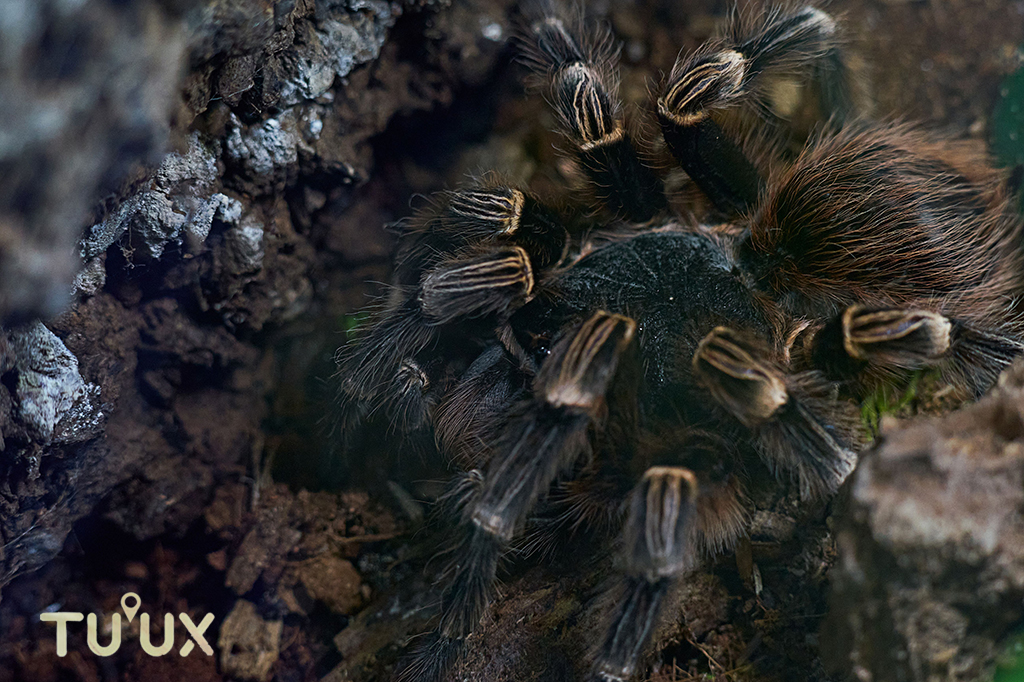
🌿 Introduction
The Mexican Caribbean, known for its lush biodiversity and breathtaking landscapes, is home to a wide variety of fascinating species. Among them, tarantulas stand out not only for their impressive appearance but also for their vital ecological role. In regions like Mahahual, Quintana Roo, these spiders are true allies of nature, helping to control populations of insects and other invertebrates, thus contributing to the overall health of local ecosystems.
🕸️ Main Tarantula Species in Mahahual and the Mexican Caribbean
🐾 Maya Tarantula (Brachypelma epicureanum)
- Distribution: Endemic to the Yucatán Peninsula; especially common in Mahahual.
- Appearance: Dark brown with grayish hues on the legs, providing excellent camouflage.
- Behavior: Nocturnal and docile; typically hides in underground burrows.
- Conservation Status: Protected by Mexican law due to illegal pet trade.
🔴 Mexican Red Rump Tarantula (Brachypelma vagans)
- Distribution: Widely spread across Quintana Roo and the entire peninsula.
- Appearance: Bright reddish hairs on the abdomen contrast with its dark body.
- Behavior: A deep burrower, it prefers sandy soils.
- Conservation Status: Listed under CITES due to trafficking concerns.
🌑 Chiapas Tarantula (Brachypelma kahlenbergi)
- Distribution: Native to Chiapas, with occasional sightings in southern Quintana Roo.
- Appearance: Darker overall, with fewer reddish hairs compared to B. vagans.
- Behavior: Shy and rarely seen outside its burrow.
- Conservation Status: Still poorly studied and potentially vulnerable.
🏜️ Desert Tarantula (Aphonopelma anitahoffmannae)
- Distribution: Found in arid regions of the peninsula, including areas near Mahahual.
- Appearance: Stout and dark brown, adapted to dry environments.
- Behavior: More active during the rainy season.
🧬 Physical Traits Adapted to Their Environment
Tarantulas in the Mexican Caribbean have evolved features that allow them to thrive in tropical climates and sandy soils:
- Body Size: Ranges from 5 to 9 cm, with leg spans up to 15 cm depending on the species.
- Coloration: Varies from dark brown to black and reddish, aiding in camouflage.
- Dense Hair: Covered in urticating hairs used for defense and sensing vibrations.
- Robust Build: Strong body ideal for burrowing and capturing prey.
- Simple Eyes: Eight eyes with basic vision, sensitive to light and movement.
- Specialized Legs: Equipped with gripping pads and claws for climbing and digging.
🌱 Ecological Importance
Tarantulas are natural regulators of insect and arthropod populations, playing a key role in preventing overpopulation of potential pests.
Their burrows also serve as essential shelters for various small animals, enhancing biodiversity. Their presence is a sign of a healthy ecosystem.
⚠️ Threats and Conservation
Main threats:
- Habitat loss due to unregulated urban and tourism expansion.
- Illegal trafficking for the exotic pet market.
- Myths and fear, often leading to unnecessary extermination.
Conservation strategies:
- 🧠 Environmental education: Raising awareness among locals and tourists.
- 🌎 Responsible tourism: Encouraging respectful interaction with local wildlife.
- 📜 Legal protection: Enforcing regulations like NOM-059-SEMARNAT.
🧠 Fascinating Facts
- 🧥 Molting: They can regenerate lost legs during molts, which occur multiple times throughout their life.
- 🕰️ Longevity: They can live up to 20 years in the wild.
- 💉 Not dangerous to humans: Bites are rare and typically harmless.
🌎 Conclusion
The tarantulas of Mahahual are more than just fascinating creatures—they are silent guardians of the jungle and coastline. Their protection is essential to preserving the natural balance of the Mexican Caribbean.
Valuing and understanding them is the first step toward a more respectful relationship with nature. By promoting ecological awareness and responsible practices, we can ensure that these magnificent spiders remain an integral part of Quintana Roo’s natural and cultural heritage.

